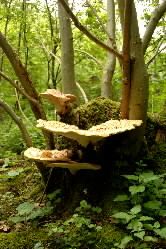Trees in urban areas are known to provide a wide range of environmental, social and economic benefits. The tree canopy can:
- Reduce the urban heat island effect by shading and evapotranspiration
- Reduce pollution by intercepting particulates and absorbing greenhouse gases
- Reduce flooding by intercepting rainfall.
Trees in urban parks have been found to improve physical and mental human health, by offering an environment for exercise and reducing levels of stress. Furthermore, the incorporation of trees into urban development plans can help to improve the aesthetics and environmental quality of an urban area which can lead to increased inward investment and the provision of jobs.
To ensure that more trees are planted in urban areas, street tree planting programmes have been implemented across the UK:
- The Big Tree Plant is a campaign to encourage people and communities to plant more trees in England’s towns, cities and neighbourhoods.
- RE:LEAF trees for a Greener London is a partnership campaign led by the Mayor to protect the capital’s trees and encourage individual Londoners, businesses and organisations to plant more trees
- The Mersey Forest Green Streets Initiative is a joint Red Rose Forest and Community Forests North West project and involves urban greening projects in Manchester, Trafford and Salford. This programme is designed to educate people on the health benefits of planting trees and to provide trees in inner-city areas in order to improve quality of life
- Streettree.org with their partners has planted 2000 street trees in central London
- Trees and Design Action Group (TDAG) brings together a pioneering group of individuals, professionals and organisations from wide ranging disciples in both the public and private sectors to increase awareness of the role of trees in the built environment
- Trees in Towns II highlights the need for a more consistent approach to standards of tree management at a city scale
- The Forestry Commission has developed the Right tree for a changing climate database to aid in decision-making of which species to locate in certain locations for trees to withstand the stresses of climate change.
The success of tree planting schemes will depend on the health of trees and it will be important to monitor trends in tree diseases and pests in urban street trees, as was carried out by the Forest Commission in forest trees.
Amenity tree survey
Background
Tree health is always a matter of public concern. The aim of the survey is to:
- Monitor and analyse trends in tree diseases, the presence of insect pests, and other damage affecting such trees across England
- Promote the awareness of tree health to tree managers and the public through the dissemination of annual reports and regular information notes.
The concept behind this programme came from the Forest Condition Survey a pan-European annual survey of forest condition which has been carried out in the UK since 1987. Whilst the Forest Condition Survey concentrates on forest trees, this non-woodland tree survey focuses on 17 genera of amenity trees commonly found in urban and rural environments.
Funding and managing the survey
The survey was originally funded by the Office of the Deputy Prime Minister (ODPM) – now the Department for Communities and Local Government (DCLG) – as part of the sustainable communities’ agenda.
Forest Research manages the survey – which uses volunteers from the public – and publishes the results.
